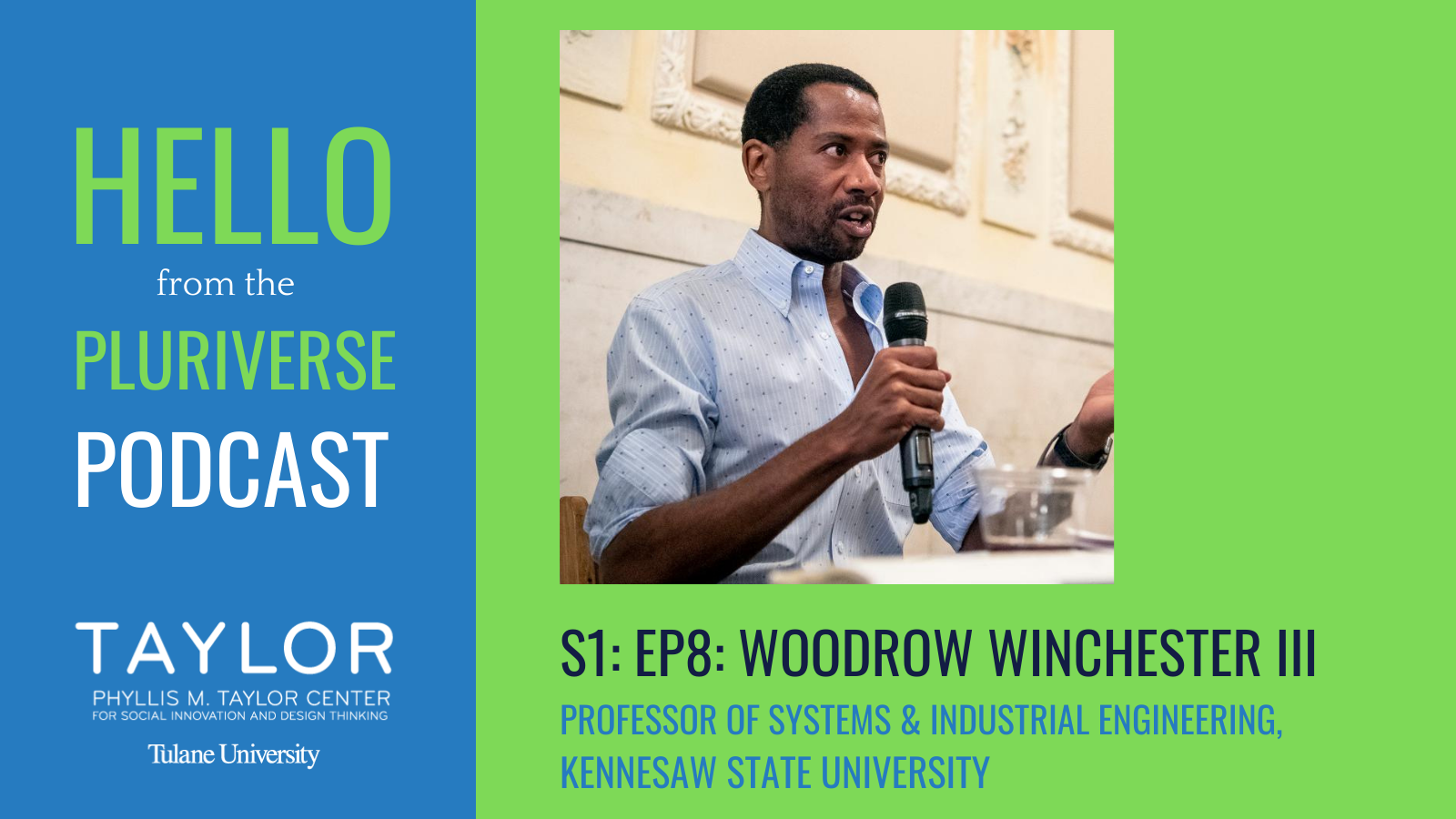Dr. Woodrow Winchester III is a professor of Systems and Industrial Engineering at Kennesaw State University and a design educator. His work within engineering focuses on interactive technologies and using connections between technology and design. Specifically, Dr. Winchester examines the connection between technology, design, health, and fitness; like his work on using interactive technologies in order to improve health outcomes, especially in underrepresented groups. Dr. Winchester also works to increase diversity and inclusion within the field of design, and he consistently is encouraging his students to think holistically and to use design thinking with other design approaches.
Get to Know Dr. Woodrow Winchester III:
Pluriverse Publication Chapter: Dr. Woodrow Winchester III
Written by Phoebe Janovic and Edited by Natalie Hudanick
Download a PDF Layout of the Dr. Woodrow Winchester III chapter in the Pluriverse Publication.
Dr. Woodrow Winchester III, a professor of Systems and Industrial Engineering at Kennesaw State University, describes himself as a design educator. Dr. Winchester’s work examines the connection between health and fitness with technology and design. His work focuses on utilizing interactive technologies in order to improve health outcomes, specifically in underrepresented groups. Additionally, his work also focuses on increasing diversity and inclusion in the field of design and encouraging his students to think holistically and link design thinking with other design approaches.
Dr. Winchester explained that he looks closely at engineering management, which considers the practices, methods, tools and techniques that engineers can utilize as designers, in coming up with technological innovations. He went on to suggest that through his work and in his teaching, there isn’t a lot of formal training around understanding issues of place and identity but that isn’t to say that it’s not a crucial component for engineers to consider when designing. Dr. Winchester felt that while the design thinking process has only recently been incorporated into the engineering field, it’s been successful in allowing his students to take a more human centered approach to their work. In discussing social innovation, Dr. Winchester explained how he encourages his students to use design thinking as it often results in a more feasible outcome, because it is more process oriented. Design thinking allows his students to understand the importance of the design process, how it is framed, and how it allows for flexibility yet still has enough structure to have more usable, and often times more innovative design outcomes. Winchester elaborates on this and says that the design process is not the same for every project. It can “shift, morph, and evolve depending on the context.”
When asked about what advice he would give to non-designers about design and design thinking, Dr. Winchester emphasizes “design thinking is not a panacea”. Just because you follow the process, it doesn’t guarantee more usable or innovative outcomes. He reiterates the importance of being realistic, in both your engagement and use of design thinking. Winchester feels that we need to put thought around the intent of our projects because we can ultimately determine that design thinking isn’t the appropriate process to use in a given context. If a non-designer is planning to use any sort design thinking processes, you have to research, learn, and understand those processes, specifically what the steps mean and how to use them. Dr. Winchester doesn’t believe that design thinking is always the appropriate method to creating effective solutions. He feels before one begins the design process, it’s crucial to consider all the possible approaches in order to find the best one in the given context.
Based on Stanford’s D School design thinking approach, Dr. Winchester said that his work focuses heavily on prototyping as it gives engineers a better understanding of the design process. He then expressed that where he likes to put more of a focus, because engineers don’t receive a lot of training in this regard, is the empathy component of design thinking. Because engineers are typically quantitative orientated, empathy is not something that is really focused on in designing any sort of prototype. Dr. Winchester emphasizes that engages with his students and colleagues in engineering about the importance of understanding what the problem means and how to go about solving that problem. It is necessary to build in appreciation for the stage of the design process and understanding the tools, methods, and techniques that work to engage stakeholders to build that empathy.
Dr. Winchester hopes that his work can inform engineers, within the context of design, to think more inclusively and consequentially in terms of the design of technologies. He wants designers to understand that their biases can be propagated within these systems and become more aware of that in the design thinking process. He is currently writing a book that discusses the tools, methods, and techniques which can help engineers in the world of design to become more inclusive and think more about what it means to be a consequential design thinker. Dr. Winchester feels that we should be more forward thinking and consider the negative and positive implications of our designs, throughout the entire process.
- Instagram: @hellopluriverse
- Twitter: @hellopluriverse
- Email: taylor@tulane.edu
- Subscribe to our newsletter
The Hello from the Pluriverse Podcast aims to open up and create a space to have conservations about the pluriversality in design.
This podcast is a project of the Design Thinking for Social Innovation Program at the Phyllis M. Taylor Center for Social Innovation and Design Thinking at Tulane University.
Executive Producer: Lesley-Ann Noel, Ph.D
Sound editing
- Max Esperance
- Lavonte Lucas: xn--vonni-fsa.com, Instagram: @vonnieradass, Twitter: @vonnieradass
Hello from the Pluriverse 2020-2021 Student Team
- Max Esperance – Podcast lead
- Natalie Hudanick and Michaeline Anglemire – Editors
- Tiwani Oseni – Communications
Hello from the Pluriverse 2019-2020 Student Team

